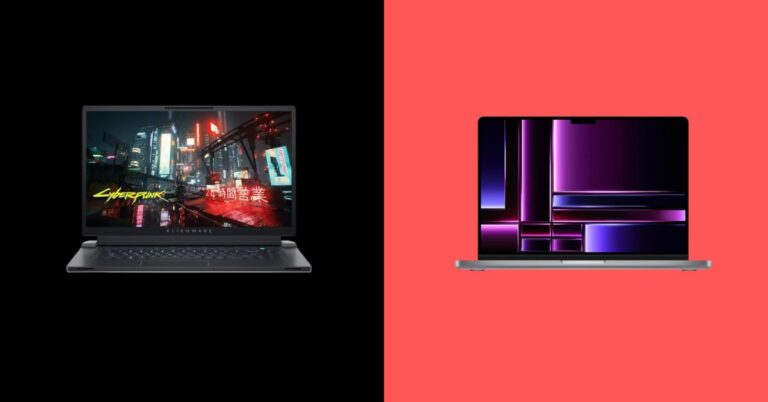Best laptops for TensorFlow | Deep And Machine Learning 2024

Looking for the best laptops for TensorFlow? Yeah, Of course, because TensorFlow is an open-source and free software library for machine learning. It can be used for various tasks but it has a specific emphasis on training and conception of wide neural networks.
In this article, we will share fundamental information regarding Tensorflow that will help you to develop a basic concept of it. Then we will discuss which laptops are the best laptops for TensorFlow.
TensorFlow was created by the Google Brain team for internal Google use. It was introduced under the Apache License 2.0 in 2015.
TensorFlow can operate on numerous CPUs and GPUs having optional CUDA and SYCL extensions for graphics processing units. It is accessible on 64-bit Linux, macOS, Windows as well as mobile computing programs including Android and iOS.
Its adjustable structure permits its users for the simple deployment of computation across different platforms.
Among the applications for which TensorFlow is the basis, are image-captioning software like DeepDream.
10 Best Laptops for TensorFlow Ready for you!
- CUK ROG Strix G17 – Laptop Best for Tensorflow
- Eluktronics MAG-15 – Best laptop for Tensorflow
- OMEN 15 – Best Laptop for Deep Learning
- MSI GS65 Stealth – Best Laptop for Machine Learning
- Lenovo ThinkPad P53 – Deep Learning Workstation
- Dell XPS 15 9570 – Best Laptop For Big Data Learning
- Dell G5 15 – Best Laptop For Data Science
- Razer Blade 15 – Best Windows Laptop For Data Analysis
- MSI GL65 Leopard – Runner Up
- Acer Predator Helios 300 – Runner Up
| Laptops | Processor | RAM |
|---|---|---|
| CUK ROG Strix G17 | Intel Core i7-10750H | 64GB RAM |
| Eluktronics MAG-15 | Intel Core i7-9750H | 64GB RAM |
| OMEN 15 | Intel Core i7-10750H | 32GB RAM |
| MSI GS65 Stealth | Intel Core i7-9750H | 32GB RAM |
| Lenovo ThinkPad P53 | Intel Core i7-9750H | 32GB RAM |
| Dell XPS 15 9570 | Intel Core i7-8750H | 32GB RAM |
| Dell G5 15 | Intel Core i7-9750H | 16GB RAM |
| Razer Blade 15 | Intel Core i7-10750H | 16GB RAM |
| MSI GL65 Leopard | Intel Core i7-10750H | 16GB RAM |
| Acer Predator Helios 300 | Intel Core i7 9750H | 16GB RAM |
Other Laptops that We didn’t Add To the List
If none of the included laptops got your interest, then we’ve compiled a list of all laptops that we chose to during our research!
| Model | CPU/GPU | RAM/Storage | Display | Weight |
|---|---|---|---|---|
| Asus ROG Zephyrus G15 | AMD Ryzen 7 5800HS / NVIDIA GeForce RTX 3060 | 16GB / 1TB SSD | 15.6″ FHD 240Hz IPS | 4.19 lbs |
| Acer Nitro 5 | Intel Core i7-11800H / NVIDIA GeForce RTX 3060 | 16GB / 512GB SSD | 15.6″ FHD 144Hz IPS | 4.85 lbs |
| HP Spectre x360 14 | Intel Core i7-1165G7 / Intel Iris Xe Graphics | 16GB / 512GB SSD | 13.5″ FHD IPS Touch | 2.95 lbs |
| MSI GE76 Raider | Intel Core i7-11800H / NVIDIA GeForce RTX 3070 | 32GB / 1TB SSD | 17.3″ FHD 240Hz IPS | 6.39 lbs |
| Gigabyte AERO 15 OLED | Intel Core i7-11800H / NVIDIA GeForce RTX 3070 | 16GB / 512GB SSD | 15.6″ UHD AMOLED | 4.4 lbs |
| Lenovo Legion 5 Pro | AMD Ryzen 7 5800H / NVIDIA GeForce RTX 3070 | 16GB / 512GB SSD | 16″ QHD 165Hz IPS | 5.4 lbs |
| Dell XPS 13 9310 | Intel Core i7-1185G7 / Intel Iris Xe Graphics | 16GB / 512GB SSD | 13.4″ FHD+ IPS Touch | 2.8 lbs |
| ASUS TUF A15 | AMD Ryzen 7 5800H / NVIDIA GeForce RTX 3060 | 16GB / 1TB SSD | 15.6″ FHD 144Hz IPS | 5.07 lbs |
| Acer Swift 3 | AMD Ryzen 7 5700U / AMD Radeon Graphics | 16GB / 1TB SSD | 14″ FHD IPS | 2.65 lbs |
| LG Gram 16Z90P | Intel Core i7-1165G7 / Intel Iris Xe Graphics | 16GB / 1TB SSD | 16″ WQXGA IPS | 2.62 lbs |
| Lenovo ThinkPad X1 Yoga | Intel Core i7-1185G7 / Intel Iris Xe Graphics | 16GB / 512GB SSD | 14″ FHD IPS Touch | 2.99 lbs |
| Dell Inspiron 15 5518 | Intel Core i7-11800H / NVIDIA GeForce MX450 | 16GB / 512GB SSD | 15.6″ FHD IPS Touch | 3.93 lbs |
| MSI Summit E15 | Intel Core i7-1185G7 / NVIDIA GeForce GTX 1650 | 16GB / 1TB SSD | 15.6″ FHD IPS | 3.97 lbs |
| ASUS ROG Zephyrus M16 | Intel Core i9-11900H / NVIDIA GeForce RTX 3070 | 32GB / 1TB SSD | 16″ QHD 165Hz IPS | 4.2 lbs |
| Lenovo Legion 7 | Intel Core i7-11800H / NVIDIA GeForce RTX 3080 | 32GB / 1TB SSD | 16″ QHD 165Hz IPS | 5.51 lbs |
| MSI Creator Z16 | Intel Core i9-11900H / NVIDIA GeForce RTX A5000 | 32GB / 2TB SSD | 16″ 4K UHD IPS | 4.63 lbs |
| Acer ConceptD 7 | Intel Core i7-11800H / NVIDIA GeForce RTX A5000 | 32GB / 1TB SSD | 15.6″ 4K UHD IPS | 4.63 lbs |
| ASUS ZenBook Pro Duo | Intel Core i9-11900H / NVIDIA GeForce RTX 3070 | 32GB / 1TB SSD | 15.6″ 4K OLED Touch | 5.5 lbs |
| HP ZBook Fury G8 | Intel Core i9-11950H / NVIDIA RTX A5000 | 32GB / 1TB SSD | 17.3″ 4K IPS | 6.2 lbs |
| Dell Precision 7560 | Intel Core i9-11950H / NVIDIA RTX A5000 | 32GB / 1TB SSD | 15.6″ 4K UHD Touch | 4.36 lbs |
| Razer Blade Pro 17 | Intel Core i7-11800H / NVIDIA GeForce RTX 3080 | 32GB / 1TB SSD | 17.3″ 4K 120Hz IPS Touch | 6.06 lbs |
| Gigabyte AERO 17 HDR | Intel Core i9-11980HK / NVIDIA RTX 3080 | 32GB / 1TB SSD | 17.3″ 4K HDR IPS | 5.95 lbs |
| ASUS ProArt Studiobook | Intel Core i9-11950H / NVIDIA RTX A5000 | 32GB / 2TB SSD | 16″ WQXGA IPS | 5.51 lbs |
Conclusion:
TensorFlow is an open-source software library to learn machine language. Its specific priority is to train and to infer the deep neural networks. To run TensorFlow on a laptop, it must have certain specialties. For your convenience, we have mentioned all the features in detail and also we have provided you a list of the Best laptops for Tensorflow. Hope so this article has been proven very supportive for you. Best of luck and have great fun.






